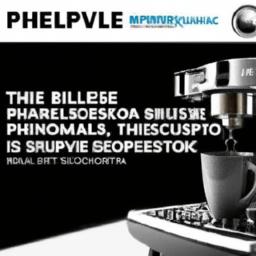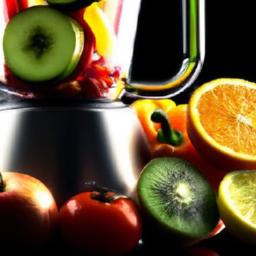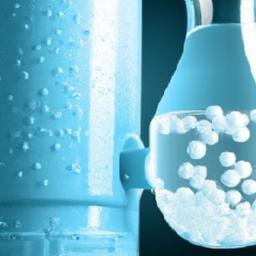Espresso vs. French Press: Discovering Your Ideal Coffee Brew
For coffee enthusiasts, deciding between a robust espresso shot and a smooth French press brew often sparks lively debates. At How To Cook Gourmet, we frequently hear questions about which method triumphs. The truth is, the ultimate choice hinges on your personal taste preferences and daily ritual.
Comparing Espresso and French Press: A Quick Overview
Espresso and French press stand as two pillars in the coffee world, each showcasing distinct characteristics. Espresso delivers a concentrated, intense burst of flavor within a brief brewing time, while French press offers a relaxed, full-bodied experience with complex taste nuances.
Espresso extraction involves forcing hot water through finely ground coffee under high pressure in approximately 25-30 seconds, resulting in a potent and creamy shot. Conversely, French press entails steeping coarse grounds in hot water for about 4 minutes, allowing the natural oils and flavors to develop fully.
| Attribute | Espresso | French Press |
|---|---|---|
| Brew Duration | ~30 seconds | 4 minutes |
| Grind Texture | Fine | Coarse |
| Flavor Profile | Intense, bold | Rich, smooth |
| Brewing Equipment | High-pressure machine | Manual plunger press |
| Caffeine Concentration | High per ounce | Moderate overall |
Are you after a rapid caffeine boost or a leisurely cup to savor? Espresso is perfect for power-packed mornings; French press suits relaxed occasions for gentle indulgence.
The Impact of Coffee Beans on Brew Quality
Your coffee beans play a pivotal role in shaping your cup, affecting everything from aroma and strength to complexity. The roast level and freshness determine how espresso and French press flavors manifest.
Espresso typically features dark roasts, as they withstand high pressure and heat, yielding robust and smoky notes. In contrast, French press enthusiasts often select medium or light roasts to highlight bright, fruity, and floral undertones.
| Bean Attribute | Espresso Preference | French Press Preference |
|---|---|---|
| Roast Level | Dark | Medium to light |
| Grind Size | Fine | Coarse |
| Flavor Notes | Bold, intense | Bright, fruity |
Bean freshness is critical: coffee roasted within the last two to three weeks provides optimal flavor. Consider buying whole beans and grinding just before brewing to preserve aroma and taste.
- Store beans in airtight containers away from light and heat.
- Sample single-origin beans to explore distinctive flavor profiles.
- Adjust grind size depending on the brewing method to maximize extraction.
Water Temperature and Brewing Time: Mastering the Essentials
The secret behind your coffee’s character lies in precise water temperature and extraction duration. Espresso thrives between 190°F and 200°F with a fast, 25-30 second pull through fine grounds, delivering concentrated flavors and a creamy crema.
French press uses water heated to about 200°F, steeping coarser grounds for 4 to 5 minutes. This extended contact time coax outs more oils and produces a hearty, layered body.
| Method | Optimal Water Temp | Brewing Time |
|---|---|---|
| Espresso | 190-200°F | 25-30 seconds |
| French Press | 200°F | 4-5 minutes |
Maintaining the right balance is vital: excessive heat or brewing time risks bitterness, while under-extraction leads to weak flavors. Achieving the ideal temperature and timing transforms coffee from everyday to exceptional.
Boldness in Flavor: Which Method Delivers?
Both brewing techniques have distinct flavor strengths. Espresso’s high-pressure infusion pulls out concentrated oils, delivering an explosive and vibrant taste in a compact shot. Meanwhile, French press yields a dense and velvety cup with complex, mellowed notes and a slight sediment texture.
| Aspect | Espresso | French Press |
|---|---|---|
| Flavor Intensity | Very High | Moderate |
| Richness | Medium | High |
| Brew Duration | Fast (30 sec) | Slower (4-5 min) |
| Texture | Velvety crema | Full-bodied, some sediment |
Choose espresso if you seek an intense flavor blast with a smooth finish. Opt for French press when craving a robust, rounded cup that invites slow sipping.
Usability and Cleaning: Convenience Factors
Espresso machines can be both rewarding and demanding-a precise, multi-component system that calls for diligent cleaning and maintenance, including routine portafilter rinsing and occasional descaling.
- Pros: Fast brewing, consistent shots once mastered.
- Cons: Complex setup and thorough cleaning process.
French press offers a straightforward, hands-on approach. Post-brew, separate the plunger and rinse easily-making cleanup quick and low fuss, though careful rinsing is necessary to prevent clogging.
- Pros: Minimal parts, simple operation and cleaning.
- Cons: Requires manual rinsing to avoid leftover grounds.
| Criteria | Espresso Machine | French Press |
|---|---|---|
| User-Friendliness | Moderate to challenging | Easy |
| Cleanup Duration | 10-15 minutes | 3-5 minutes |
| Number of Parts | Several | Few |
| Messiness | Medium | Low |
Matching Your Coffee Method to Your Morning Rhythm
Consider how your typical morning unfolds: a quick hustle or a leisurely start. Espresso suits fast-paced mornings needing a rapid energy burst, while French press complements relaxed routines where savoring the brew is part of the awakening.
| Morning Mood | Espresso | French Press |
|---|---|---|
| Time Available | Under 5 minutes | Approximately 10 minutes |
| Preparation Complexity | Requires machine handling | Manual & intuitive |
| Flavor Experience | Strong, brisk | Full-bodied, mellow |
| Cleanup Demand | More detailed | Simple |
Choose a brew style that aligns with your morning tempo for a seamless coffee ritual. Many coffee lovers enjoy alternating between the two depending on mood and schedule.
Understanding Costs and Required Equipment
Investing in espresso gear can vary widely, from budget models starting around $100 to advanced machines costing several thousand dollars. These often require complementary accessories like precise grinders, tampers, and maintenance tools.
- Espresso Equipment: Higher upfront cost, technical operation.
- French Press: Affordable ($15-$50), ease of use, minimal extras.
| Equipment Type | Price Range | Additional Needs |
|---|---|---|
| Espresso Machine | $100 – $3000+ | Fine grinder, tampers, cleaning supplies |
| French Press | $15 – $50 | Coarse grinder (optional) |
Factor in your budget and willingness to maintain your equipment when deciding which brew method to embrace.
Elevate Your Coffee Tasting Skills
Engaging your senses thoughtfully transforms coffee drinking into an event. Begin by inhaling the aroma-is it vibrant and inviting or dull and burnt? Then, assess body, acidity, flavors, and finish as you sip slowly.
- Body: Is it watery or syrup-like?
- Acidity: Bright and lively or dull?
- Flavor Hints: Detect notes of chocolate, berries, nuts?
- Aftertaste: Lingering or fleeting?
| Tasting Element | Espresso Score (1-5) | French Press Score (1-5) |
|---|---|---|
| Body | ||
| Acidity | ||
| Flavor Notes | ||
| Aftertaste |
Experimenting with different beans and brewing variables can deepen your appreciation and help you identify your preferred style.
Frequently Asked Questions
Q: What fundamentally distinguishes espresso from French press coffee?
A: Espresso uses high-pressure extraction with fine grounds for fast, concentrated shots. French press involves immersing coarse grounds in hot water, producing a fuller-bodied, slower brew.
Q: Which method produces a stronger coffee taste?
A: Espresso yields a more intense, concentrated flavor profile. French press offers richness but tends to be smoother and less sharp.
Q: How long does each take to prepare?
A: Espresso can be pulled in about 30 seconds; French press requires around 4 minutes to steep.
Q: Which is easier for beginners?
A: The French press is generally simpler and more forgiving than an espresso machine, which demands practice and equipment familiarity.
Q: What about cost and maintenance?
A: Espresso setups usually require a higher investment and ongoing care, while French presses are budget-friendly and easy to maintain.
Q: How many servings do each produce?
A: Espresso machines typically make 1-2 shots per extraction; French presses can brew multiple cups depending on size.
Q: Which method offers more variety in drinks?
A: Espresso serves as a base for many specialty drinks like lattes and cappuccinos; French press maintains a pure, straightforward coffee experience.
Q: What’s the cleaning process like?
A: French press cleanup is quick but involves rinsing grounds; espresso machines need routine cleaning and occasional deep maintenance.
| Feature | Espresso | French Press |
|---|---|---|
| Brew Time | About 30 seconds | 4 minutes |
| Taste Profile | Concentrated, intense | Rich, smooth, full-bodied |
| Equipment | High-pressure machine | Manual plunger |
| Ease of Use | Moderate-difficult | Easy |
| Batch Size | 1-2 shots | Multiple cups |
| Cleanup | Regular maintenance required | Simple grounds disposal |
Final Thoughts: Choosing Your Coffee Companion
Whether you prefer the bold, swift kick of espresso or the mellow, indulgent comfort of French press, both methods offer unique pleasures. Your mood, schedule, and flavor preferences will guide your choice.
Embrace experimentation-try both techniques to unveil your perfect match. Remember, coffee brewing is more than preparation; it’s a personal ritual that transforms ordinary mornings into memorable moments.
Ready for your next cup? Whatever path you take, savor the journey and delight in every sip.




